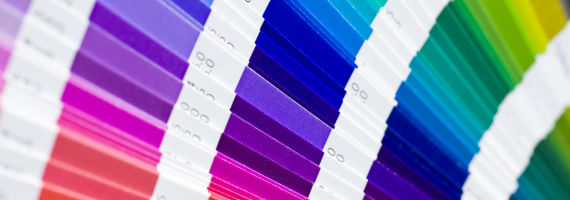
Color Printing an Overview
For other uses of the term “colour separation”, see colour-separation overlay.
Color printing is the reproduction of an image or text in color (as opposed to simpler black and white or monochrome printing). It may also commonly be called four-color process printing when only the colors cyan, magenta, yellow, and black (also known as CMYK) are used. Another emerging method of color printing is six-color process printing (for example, Pantone’s Hexachrome system) which adds orange and green to the traditional CMYK for a larger and more vibrant gamut, or color range.

Color printing involves a series of steps, or transformations, in order to generate a quality color reproduction. Here are the main steps when reproducing a color image in CMYK print, along with some historical perspective.
Color separation Printing Process
The process of color separation occurs when the original artwork is digitally scanned and separated into red, green, and blue components. Before digital imaging was developed, the traditional method of doing this was to photograph the image three times, using a filter for each color. However this is achieved, the desired result is three grayscale images, which represent the red, green, and blue (RGB) components of the original image:
The next step is to invert each of these separations. When a negative image of the red component is produced, the resulting image represents the cyan component of the image. Likewise, negatives are produced of the green and blue components to produce magenta and yellow separations, respectively. This is done because cyan, magenta, and yellow are subtractive primaries which each represent two of the three additive primaries (RGB) after one additive primary has been subtracted from white light.
Cyan, magenta, and yellow are the three main pigments used for color reproduction.
When these three colors are combined in printing, the result should be a reasonable reproduction of the original, but it is not. Due to limitations in the ink pigments, the darker colors are dirty and muddied. To resolve this, a black separation is also created, which improves the shadow and contrast of the image.
Numerous techniques exist to derive this black separation from the original image; these include grey component replacement, under color removal, and under color addition. This printing technique is referred to as CMYK (the “K” being short for “key.” In this case, the key color is black).
Cyan, magenta, yellow, and black (CMYK) inks when printed separately. During normal print production, these would be printed on top of one another.
Today’s digital printing methods do not have the restriction of a single color space that traditional CMYK processes do. Many presses can print from files that were ripped with images using either RGB or CMYK modes The color reproduction abilities of a particular color space can vary; the process of obtaining accurate colors within a color model is called color matching.


